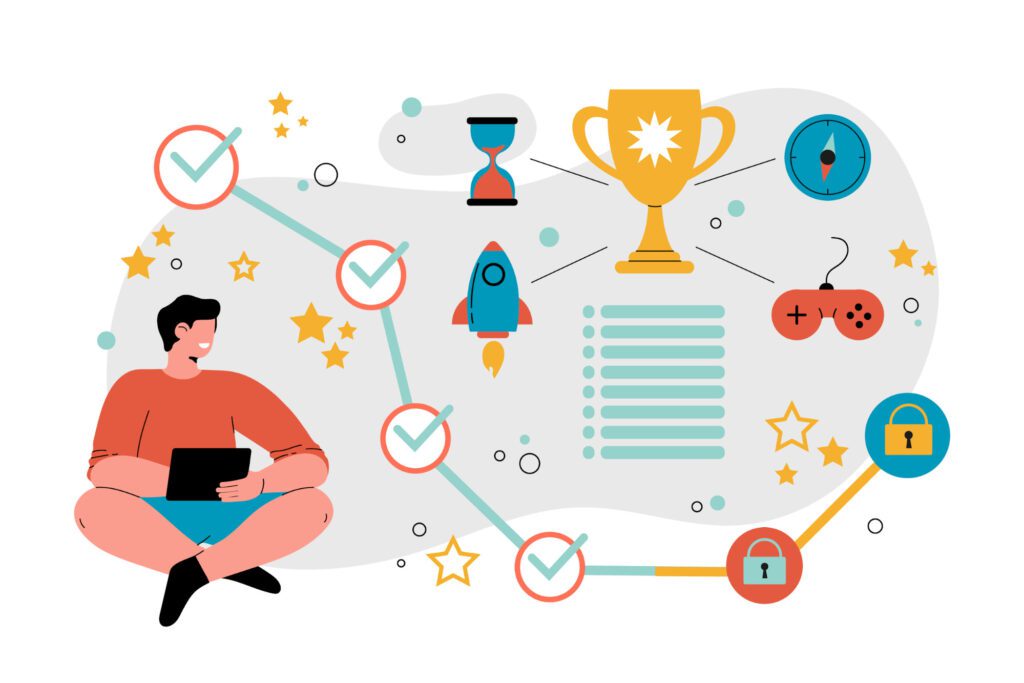Gamification, or the application of game elements in non-game contexts, is reshaping learning environments by making educational content more engaging and enjoyable. This article explores how integrating gamification into educational settings enhances learner motivation and revolutionises traditional teaching methods.
Understanding Gamification in Education
Gamification involves using game-like elements such as competition, rewards, and storytelling in educational settings to make learning more engaging. Unlike traditional methods, which often rely on rote memorization, gamification uses intrinsic motivations inherent in games to encourage active participation and progression in learning.
Key Components of Educational Gamification:
- Points and Rewards: Students earn points and achievements by completing tasks or reaching milestones, fostering a sense of accomplishment and encouraging continuous engagement.
- Competition and Collaboration: Leaderboards create a friendly competitive atmosphere, while group challenges promote teamwork and community building.
- Narratives and Storytelling: Incorporating stories into lessons makes learning more captivating, helping students maintain interest and engagement.
- Progression Systems: Similar to video game levels, educational progression systems show learners their growth, encouraging continued participation.
- Immediate Feedback: Rapid response cycles in gamification provide instant feedback, allowing students to quickly adjust and improve.
Impact of Gamification on Learning:
- Enhanced Engagement: Gamification captures students’ attention by making learning inherently interesting, dynamic, and interactive.
- Boosted Intrinsic Motivation: By tapping into the natural desire to explore and achieve, gamification increases students’ motivation to learn for enjoyment rather than external rewards.
- Improved Retention: The interactive nature of gamified learning means concepts are frequently revisited and reinforced, enhancing memory retention.
- Personalized Learning Paths: Gamification supports diverse learning speeds and styles, allowing for a more tailored educational experience.
- Encouragement of Critical Thinking: Game-based scenarios require decision-making and problem-solving, skills that foster critical thinking.
- Practical Application: Simulating real-world scenarios helps bridge the gap between theoretical knowledge and practical application, making learning more relevant.
Challenges and Considerations:
- Balance of Rewards: Overemphasis on extrinsic rewards can detract from learning. Educators need to balance motivational strategies to maintain focus on comprehension.
- Inclusivity and Accessibility: It’s essential to ensure that gamified elements are accessible and do not disadvantage any group of students.
- Maintaining Academic Rigor: Educators must balance the fun elements of gamification with the need to achieve educational outcomes without compromising academic depth.
- Resource Availability: The implementation of gamification requires certain technological resources, which may not be uniformly available across all educational settings.
Conclusion
As a dynamic force in education, gamification offers an engaging alternative to conventional educational methods, fostering environments where learning is not just a necessity but a pleasure. As technology advances, the potential to expand and refine gamification strategies will grow, making it crucial to find the right balance between fun and educational rigor, ensure accessibility, and cater to diverse learner needs.



